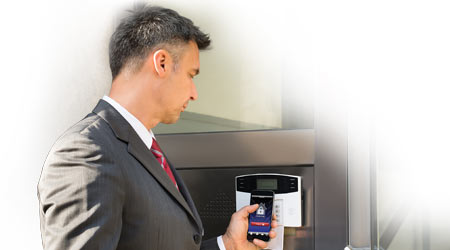 Door hardware products have become key components in digital access control systems that offer managers expanded opportunities to protect facilities occupants day and night.
Door hardware products have become key components in digital access control systems that offer managers expanded opportunities to protect facilities occupants day and night.Door Hardware: Performance Matters
There are numerous benefits for managers who managers specify the proper new-generation door hardware products for a digital access control system.
The search for performance
Once managers specifying door hardware components are up to speed on new-generation products, the next step is to understand the benefits these products can offer as part of a facility’s access control system.
Continuous gear hinges are available that meet UL fire-door specifications. With no gap between the door and frame and no hardware visible when the door is closed, they are more difficult to locate and tamper with.
Door closers ensure a door closes and latches without any intervention by the occupant, even after the occupant passes through. Automatic closers can be activated remotely. Grade 1 closers for commercial, high-traffic entries resist forced openings and closings and comply with accessibility guidelines. Features such as separate, independent latch and sweep speeds, as well as backcheck intensity and hold-open or no-hold-open ensure a proper fit for a variety of applications.
For example, a closer with a latch speed that is faster than sweep speed gives time for the user to get through the opening. Yet it provides a rapid, positive latch speed with greater force that ensures a normally locked door will close and latch. This feature is particularly useful in conditions where exhaust air systems create a differential pressure from one side of the door to the other that the user must overcome. Without this rapid latch speed, the latch would hit the strike and stop, failing to lock. This rapid latch speed ensures enough locking force for security and safety.
Managers can use the time and attendance data that the access control system gathers, to verify work hours, prevent clocking in for another employee, and prevent entering or leaving at unauthorized times. The access control system’s database contains a complete, historical, and time-stamped record of each access attempt and monitors forced openings and too-long-open incidents, recording the event and activating alarms when appropriate.
With smartphone lock application software, there are no manual keys, electronic card keys, fobs or keypad codes to keep track of. The user just opens the door with a click of the phone.
Wireless cellular systems are less expensive and install quickly. Instead of wiring, they rely on TCP-IP, virtual private network, or radio-controlled signal transmission to or from the access control field panel and server. They can be moved easily from one location to another when a building or its secure-area entry points change. Wireless systems with battery backup will operate during a power failure or emergency, such as storms or fires.
The access control manager can change access to different people, places, or times, and cancel and replace lost fobs or cards without the expense of changing locks. Access security is more effective than in the past at lower cost.
Related Topics:














